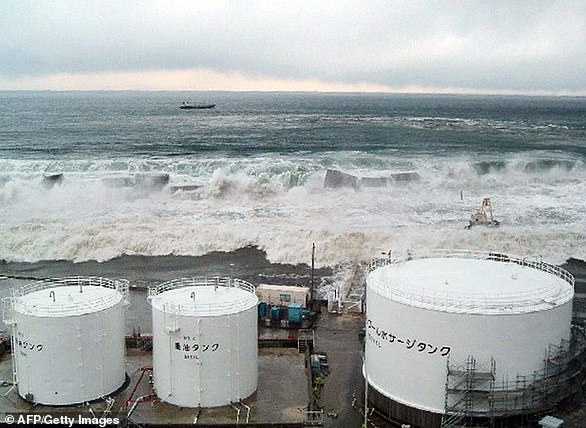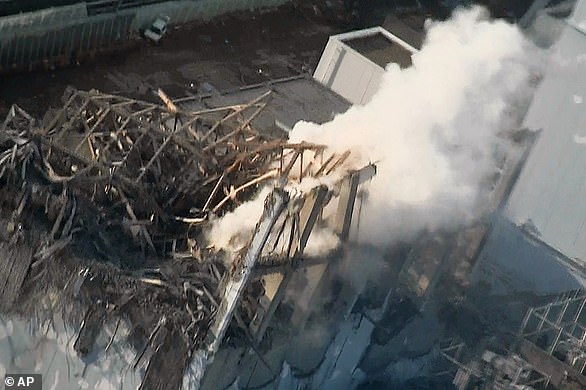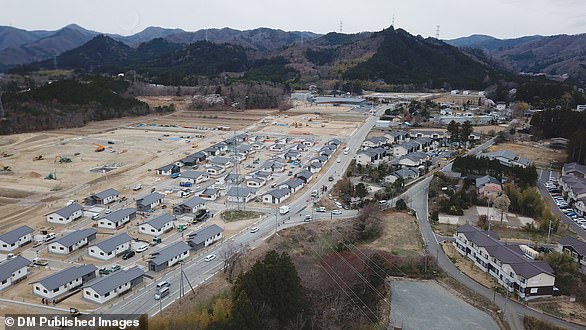Do they know something we don’t? UK health chiefs issue guidance on what to do in a radiation emergency amid escalating WW3 fears
Britons will be told to ‘get indoors, stay indoors and tune in’ if Britain is hit by a ‘radiation emergency’, according to new advice from health chiefs.
The guidance was published today by the UK Health Security Agency (UKHSA).
It comes amid rising global tensions involving nuclear powers such as China and Russia.
Last year, Russian state television even brazenly simulated how Vladimir Putin might launch a nuclear attack on London, declaring there would be “no survivors.”
Although the document does not mention nuclear weapons, it does explain what Britons should do in a ‘radiation emergency’, which could be caused by a leak at a nuclear power station or during the transport of radioactive material.
The most important advice is to get in as soon as possible. Health chiefs claim this can reduce radiation exposure by 85 percent compared to being outdoors.
The UK Health Security Agency has issued advice on what Britons should do in the event of a ‘radiation emergency’, such as an incident at a nuclear power station
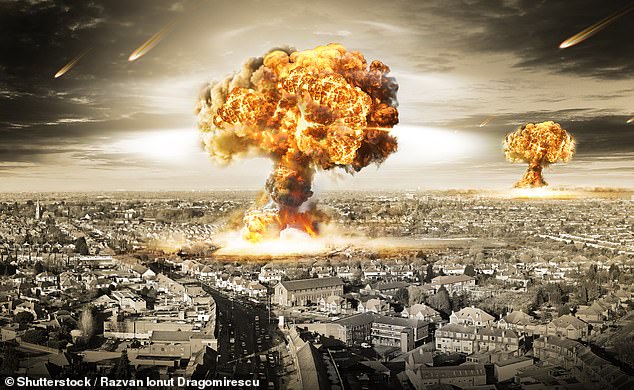
The new guidelines come at a time of increasing global tensions between nuclear powers
Being indoors also reduces the amount of inhaled radioactive material by 40 percent, the advice reads.
While some buildings are better than others, health chiefs say the priority should be access by any means necessary.
“Buildings made of brick, stone, concrete or similar materials provide the best protection, but inside any building is better than outside,” it says.
“If you’re already in a building, stay there.”
It warns that Britons may be advised to stay indoors for up to two days – a procedure called ‘sheltering-in-place’ – to reduce further potential exposure.
People outside and near the emergency were at risk of having their clothing, skin and hair contaminated.
As a result, they may be advised to self-decontaminate, which involves removing clothing – which removes 90 percent of all contamination – and showering.
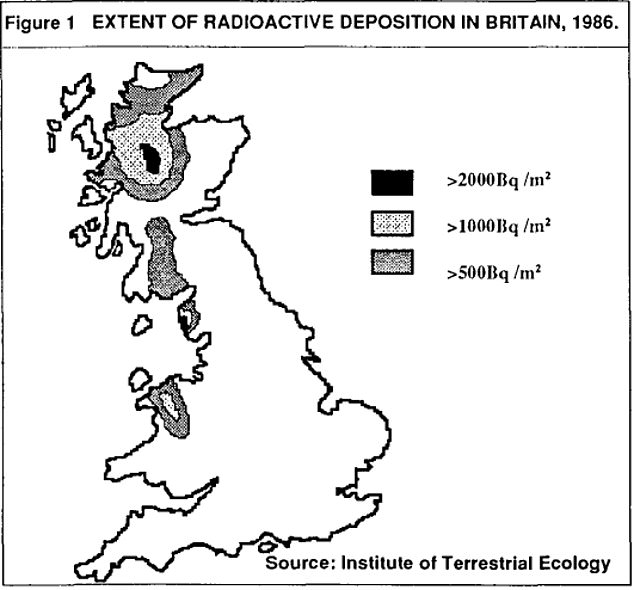
Nuclear disasters abroad have struck Britain before. This map, provided to MPs in 1993, shows areas of Britain most affected by the aftermath of the 1986 Chernobyl nuclear power station explosion
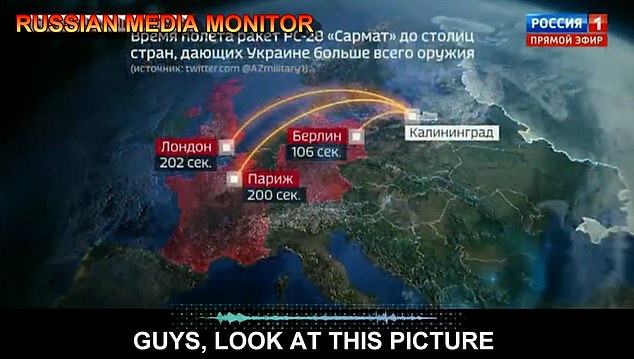
Last year, Russian state television published a map showing how long it would take for Russian missiles to hit Britain, France and Germany if launched from Kaliningrad.
Once sheltered, Britons should follow official government advice on what to do next via radio, television, internet, social media or the police, the UKHSA said.
In addition to incidents at nuclear power stations or in the transport of radioactive material, the UKHSA recognizes that emergency situations abroad could result in material ending up in Britain, depending on weather conditions.
Such an incident has already occurred in British history.
On April 26, 1986, an explosion at the Chernobyl nuclear power plant in the then Soviet Union caused radioactive material to be carried by wind to Western Europe.
Although spared most of the consequences, Britain was not entirely unaffected. The highlands of Wales, Cumbria, Scotland and Northern Ireland reported the heaviest deposition of radioactive material in Britain as a result of the disaster.
The exposure led to the slaughter of sheep that were found to have excessive levels of radioactive material in their meat.
Health heads can also deploy iodine tablets in the aftermath. The pills prevent radiation from damaging the thyroid gland – a gland in the neck that secretes hormones essential for regulating the thyroid gland metabolism.
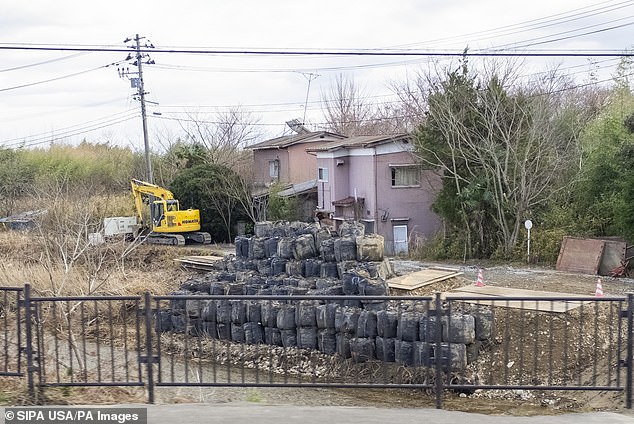
Black plastic bags containing layers of contaminated topsoil scraped away to remove radiation in the city of Futaba, which suffered the consequences of the Fukushima nuclear disaster in 2011
The UKHSA’s new guidance also sets out the potential for long-term measures to protect human health in the aftermath of a radiation emergency.
If levels are considered dangerous in certain regions, people may be forced to leave their homes temporarily or, in extreme cases, ‘permanently’.
Such measures have been introduced in other countries dealing with nuclear disasters.
Thousands of people were forced to evacuate when Japan’s Fukushima nuclear power plant released dangerous levels of radiation after it was damaged by a devastating earthquake and resulting tsunami in 2011.
Some residents only returned to their homes last year, almost twelve years after the disaster.
High or long-term exposure to radiation poses a number of potential immediate and longer-term health risks.
Radiation, which is impossible to see, smell or taste, can burn the skin from an atomic explosion and damage tissues deeper in the body, causing a condition called radiation sickness.
In the longer term, exposure to food and water contaminated with radioactive material can increase the risk of developing cancer.

